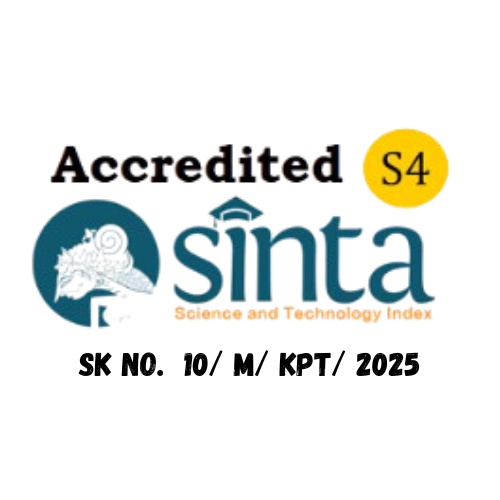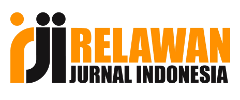Increasing Efficiency with the VSM Method to Reduce Waste in the Line Assembly of the Wooden Ship Process Production
Abstract
Monas Home Industry is one of the home industries in Tegal. Monas Home Industri produces ships from wood called wooden ships. The name of the ships is “kapal cantrang”. The system of production of Kapal Cantrang is make to order. It means Monas will produce if there is any order from customer. The problem occurs when Monas Home Industry cannot fulfill customer order ontime. The purposes of this study are to identify the types of waste and improve waste through the lean manufacturing concept. The Value Stream Mapping (VSM) is carried out to mapping a detailed value stream. Mapping process begins with identification the initial concept of the map then analysis of waste. As the results, there are three kinds of waste, that are: Processing (19%), Defect (18%), and Movement (17%). Before improvement, the percentage of transportation time was 1.7%, including the necessary but non added value category. Then, the Value Added Ratio was 97.2%. The PAM percentage after improvement became 1.2% and the VAR value became 98%.
Keywords: Lean Manufacturing, Value Stream Mapping, Wooden Vessels
References
Boswell, G. (1997) Managing quality matters, Social Work Education. america. doi: 10.1080/02615479711220031.
Gaspersz (2007) Lean Six Sigma for Manufacturing And Service Industries. Jakarta: PT. Gramedia Pustaka Utama.
Gasperz (2005) Total Quality Management. Jakarta: PT. Gramedia Pustaka Utama.
Hidayat, R., Tama, I. P. and Efranto, R. Y. (2014) ‘Penerapan Lean Manufacturing Dengan Metode VSM Dan FMEA Untuk Mengurangi Waste Pada Produk Plywood (Studi Kasus Dept. Produksi PT Kutai Timber Indonesia)’, Jurnal Universitas Brawijaya, 5(2), pp. 1032–1043.
Hines, P. and Rich, N. (1997) ‘The seven value stream mapping tools’, International Journal of Operations and Production Management, 17(1), pp. 46–64. doi: 10.1108/01443579710157989.
Holweg, M. (2007) ‘The genealogy of lean production’, Journal of Operations Management, 25(2), pp. 420–437. doi: 10.1016/j.jom.2006.04.001.
Intifada, G. S. and Witantyo (2012) ‘Minimasi Waste (Pemborosan) Menggunakan Value Stream Analysis Tool Untuk Meningkatkan Efisiensi Waktu Produksi (Studi Kasus PT. Barata Indonesia, Gresik)’, Jurnal Teknik POMITS, 1(1), pp. 1–6.
Iskandar and Novita (2000) ‘Tingkat Teknologi Pembangunan Kapal Ikan Kayu Tradisional di Indonesia’, Buletin PSP, pp. 53–67.
Lestari, K. and Susandi, D. (2019) ‘Penerapan Lean Manufacturing untuk mengidentifikasi waste pada proses produksi kain knitting di lantai produksi PT. XYZ’, Prosiding Industrial Research Workshop and National Seminar, 10(1), pp. 567–575.
Nash, M. A. and Poling, S. R. (2011) Mapping the Total Value Stream, Mapping the Total Value Stream. CRC Press. doi: 10.4324/9780429294631.
Salunke, S. S. and Hebbar, S. (2015) ‘Value Stream Mapping: A Continuous Improvement tool for Reduction in Total Lead Time’, International Journal of Current Engineering and Technology, 5(2), pp. 931–934.
De Treville, S. and Antonakis, J. (2006) ‘Could lean production job design be intrinsically motivating? Contextual, configurational, and levels-of-analysis issues’, Journal of Operations Management, 24(2), pp. 99–123. doi: 10.1016/j.jom.2005.04.001.
Womack, J. P. and Jones, D. T. (2003) Lean Thingking: Banush Waste And Create Wealth In Your Corporation, Free Press: A Division of Simon & Schuster, Inc. doi: 10.1007/BF01807056.

This work is licensed under a Creative Commons Attribution-NonCommercial-ShareAlike 4.0 International License.












